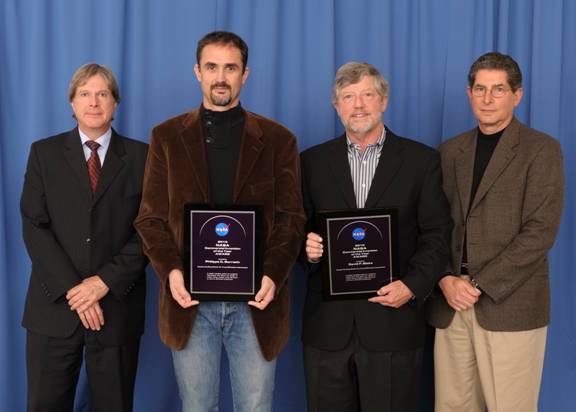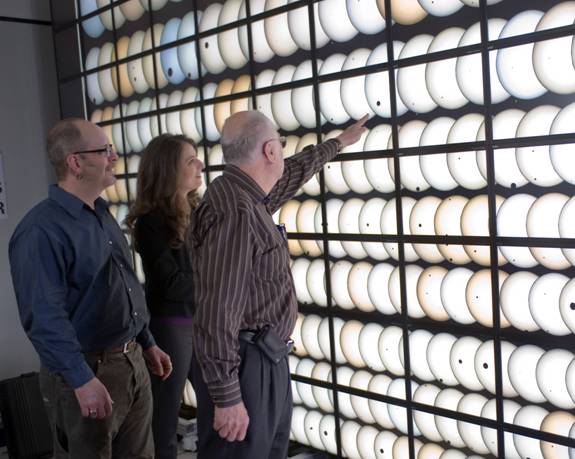


Invention of the Year Awards for 2010
The Government Invention of the Year for 2010 is FACET, developed at NASA’s Ames Research Center. FACET is a flexible software-based simulation environment for exploration, development, and evaluation of advanced Air Traffic Management (ATM) concepts. Examples of concepts studied using FACET are: aircraft self-separation for Free Flight, modeling and prediction of air traffic controller workload, a decision support tool for direct routing, integration of space launch vehicle operations into the U.S. National Airspace System (NAS), and advanced traffic flow management techniques using rerouting, metering and ground delay.
FACET models system-wide airspace operations over the contiguous United States. Airspace models (e.g., Center/sector boundaries, airways, locations of navigation aids and airports) are available from databases. Weather models (winds, temperature, bad weather cells, etc.) are also available. Trajectories are modeled using spherical-earth equations; aircraft can be flown along either flight plan routes or direct (great circle) routes as they climb, cruise and descend according to their individual aircraft-type performance models.
FACET is able to model airspace operations at the U.S. national level, and process over 10,000 aircraft on a single desktop/laptop computer for a variety of operating systems.
The Commercial Invention of the Year for 2010 is the Powder Handling Device For Analytical Instruments . This invention, developed at NASA’s Ames Research center, takes coarse powders and shakes them at sonic frequencies so that the powdered material within the cell (a disc-shaped volume that is 8 mm diameter and 170 Fm thick) undergoes granular convection similar to a heated liquid, causing the individual grains to move past the X-ray beam in a randomized orientation over time.
The result is an X-ray diffraction pattern with the correct diffracted intensities from a compact instrument with no moving parts. PXRD devices utilizing this invention can be extremely small, and do not require X-ray source, sample and X-ray detector movements, specialized divergence or convergence of the diffracted beams. This is critical for NASA spaceflight applications where small size, low mass, low power and uncomplicated sample preparation are important, as well as for in situ analysis of materials at remote localities using portable equipment. Furthermore, in applications such as analysis of synthesized pharmaceuticals, small quantities of asgrown crystallites (as for example are prepared in pharmaceutical research laboratories) can be analyzed without further sample preparation.
Software of the Year Award for 2010
The Kepler Science Operations Center (SOC), developed at NASA’s Ames Research Center, is responsible for several aspects of the Kepler Mission, including managing targets, generating onboard data compression tables, monitoring photometer health and status, processing science data, and exporting Kepler Science Processing Pipeline products to the Multi-mission Archive at Space Telescope [Science Institute] (MAST). The pipeline framework software developed for the Kepler Mission is used to achieve these goals, including development of pipeline configurations for processing science data and performing other support roles, and development of custom unit-of-work generators for controlling how Kepler data are partitioned and distributed across the computing cluster. It includes an interface between the Java software that manages data retrieval and storage for a given unit of work and the MATLAB algorithms that process the data. The data for each unit of work are packaged into a single file that contains everything needed by the science algorithms, allowing the files to be used to debug and evolve the algorithms offline.
Runner up awards were given to:
LEWICE, Version 3.2.2 from Glenn Research Center
Direct Readout Laboratory (DRL) International Polar Orbiter Processing Package (IPOPP) from Goddard Space Flight Center
 ICB Home
ICB Home Back
Back

